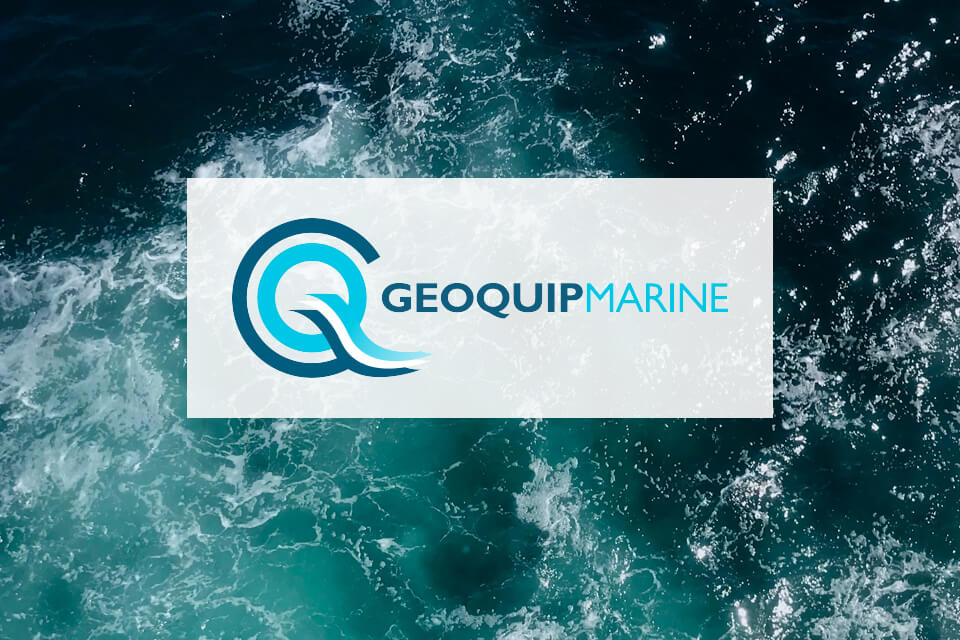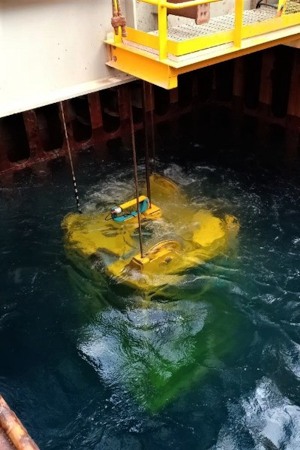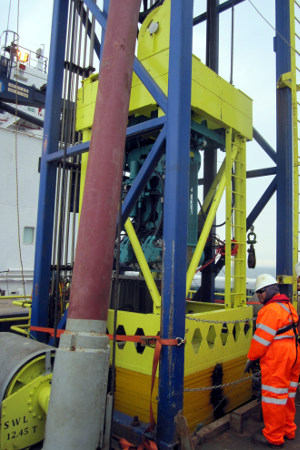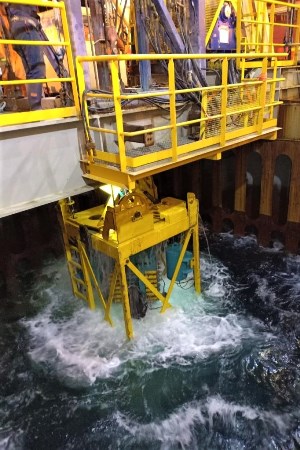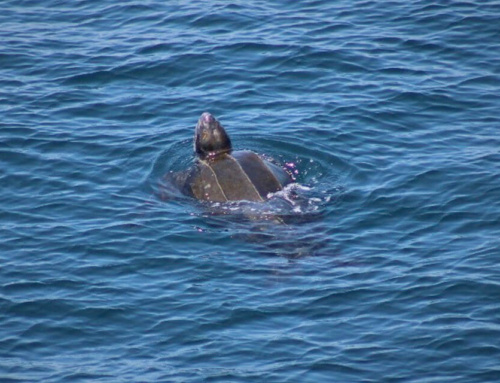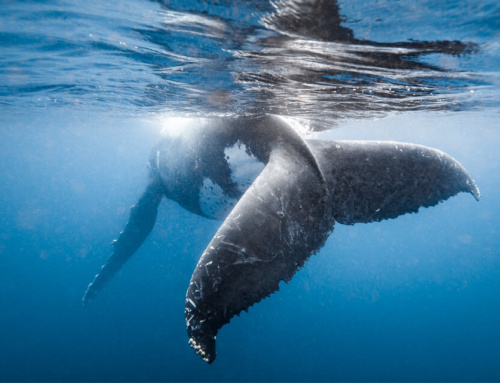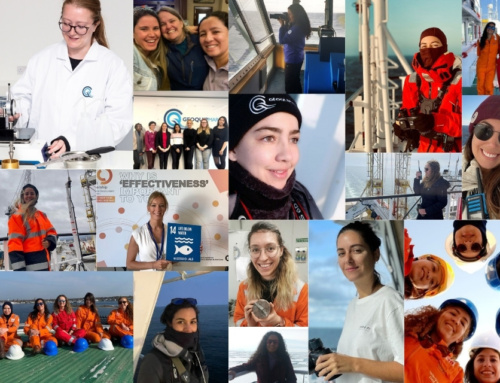Recognition of the importance of gathering high-quality Seismic CPT data has grown significantly in recent years as understanding of the specific challenges of offshore windfarms has become clearer.
Global offshore geotechnical data acquisition, analysis and reporting specialist Geoquip Marine has taken a leading role in furthering this vital process by establishing a very successful professional partnership with Baziw Consulting Engineers, Ltd (BCE), which is recognised as the world leader in seismic data interpretation technology.
“Seismic testing is an established technology on land with a very simple fundamental engineering principle,” explains Geoquip’s Principal Geotechnical Engineer, Toby Masters.
“If you sink a plate into the soil and hit it with a hammer, sound waves will travel through the soil as energy is transferred through it. On land you can see the plate and can hit it easily by manual operation. The complexity with undertaking the process in water is that you can’t see the plate, hitting it needs to be remotely and reliably operated and that makes it a lot more complex, with higher costs and more complicated logistics due to variations in climatic and sea conditions.”
Recognising the significance of gathering high-quality seismic CPT data for its core work in geotechnical data acquisition for offshore windfarms, Geoquip has invested heavily in building its own acquisition system, which has been very carefully engineered to make it suitable for the specific needs of offshore investigation in a wide range of seabed conditions. Geoquip also approached BCE to guarantee that they could provide the most detailed analysis possible of the acquired data and thus accurate results derived from that data.
“Fundamentally, wherever you build an offshore windfarm you have to have accurate seismic data,” says Toby Masters. “There are two significant factors in this, the first being the risk of liquefaction from earthquakes, which demands detailed understanding of the substrate conditions to determine if the site is suitable for development. If the soil is below a certain threshold it is more likely that change in velocity will liquefy it.
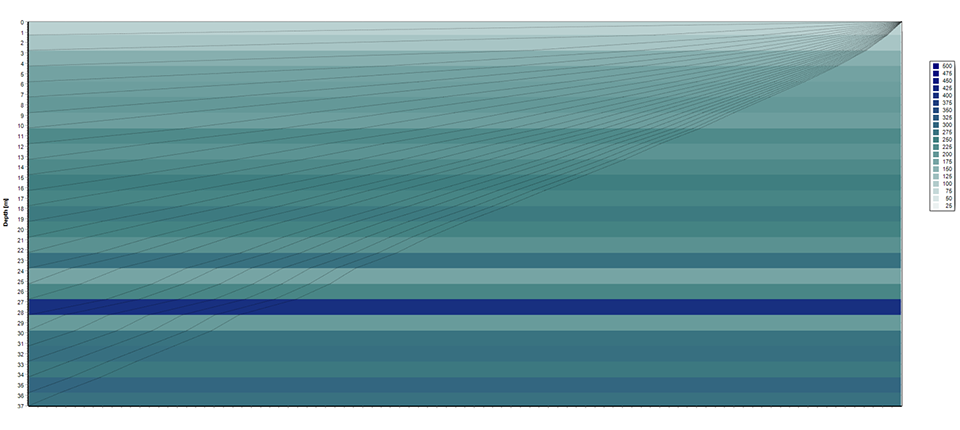
“Secondly there is a need to have a detailed evaluation of the shear wave velocity of the soil to develop engineering parameters for the wind turbine generator foundation design. Offshore wind turbines are subject to moment and lateral loadings due to the rotation of the turbine blades and on-site environmental conditions, respectively, therefore understanding how the soil will behave around the pile is essential for long term serviceability,” Toby explains.
In order to obtain the most accurate data Geoquip has learnt that it is imperative to undertake in-situ testing, as this omits the risk of any sample disturbance by removing soil samples from the ground.
Geoquip has learned there are a range of other critical considerations to get the most accurate seismic data possible. One of the most important of these relates to the need for limiting ambient noise as much as possible. It is important to limit noise from the vessel itself and therefore the seabed seismic CPT with no direct connection to the vessel is the optimum approach. Whereas with downhole drilling there will likely be additional noise due to the direct contact with the vessel.
Operating in heavy seas will cause a greater amount of noise from the vessel, as the Dynamic Positioning (DP) thrusters will be working harder to maintain position. The conditions of the substrate, as ever, are also highly significant. Sand soils do not present many difficulties in gathering high-quality data, but Geoquip Marine has previously encountered problems with thick layers of clay that attenuate the seismic signal.
As a result of the efforts made by Geoquip Marine it has been able to adapt the equipment it uses as well as the practices it employs in gathering the seismic data and this has resulted in the company consistently securing class leading data. “We are proud that we recently successfully gained very accurate data at a depth of 100m, and we are confident that we are now equipped to get high quality data at even greater depths in the future,” says Toby Masters.
However, Geoquip Marine is very aware that securing the seismic data is only half of the job and the challenge of interpreting that data is an equally vital component, which is why they chose to approach BCE.
“This is a perfect collaboration for BCE because we rely on Geoquip Marine to provide us with the highest quality data so that we can work to present the best possible interpretation of it, and the advances they have made in securing the best seismic data also then assists us in further developing our own analytical software,” explains Commercial Director Gerald Verbeek.
BCE is globally recognised for providing state-of-the-art data acquisition and analysis systems for geotechnical site investigations, and it has created its own software for a variety of geophysical tasks, including SC3-Rav, a tool specifically designed to process Seismic CPT data.
“Data interpretation is always a challenging task and the variables in seismic CPT work make it particularly so as the quality of data varies greatly according to a range of factors,” he adds. “We are very proud to be able to boast that we are the only people who have ever developed anything like this software, which is specifically designed to meet these challenges,” he explains.
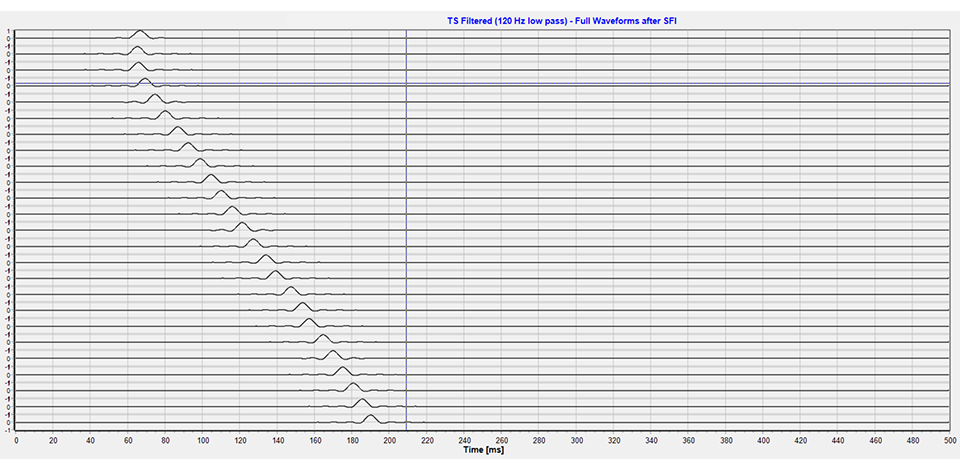
“The symbiotic close working relationship we have with Geoquip Marine has been beneficial for both parties. It has enabled us to enhance our software, especially when it comes to analysis of data at greater depths, and it has provided Geoquip Marine with instant feedback that they can use to enhance their operating procedures and their acquisition system. The end result is that their clients are given data that is more accurate and reliable for this vital specific function than they would otherwise be able to obtain.”
As Gerald Verbeek points out though, what Geoquip Marine and BCE have achieved working together up to now is by no means a final solution. “We know a lot about analysing data, but there is still a lot to learn. We have built a relationship based on trust and respect that is working very well indeed and is leading the world in this technology, but we will learn a lot more in the years ahead and there is no doubt that this will lead to significant advancement at both ends of the process, both in data collection and in analysis and interpretation,” he concludes.
** Ends **
For more information on Geoquip Marine go to geoquip-marine.com
For further editorial information, to arrange for high resolution images or to request an interview, please contact marketing@geoquip-marine.com.


